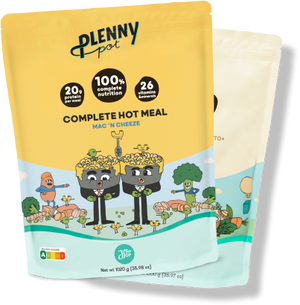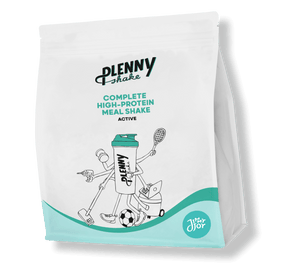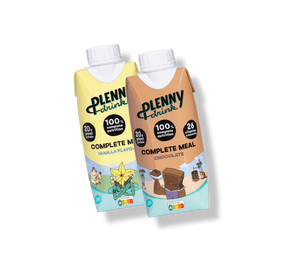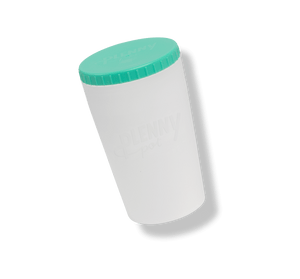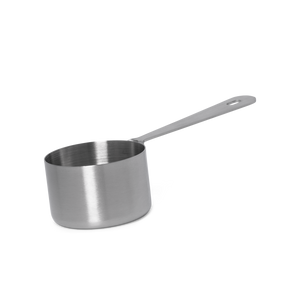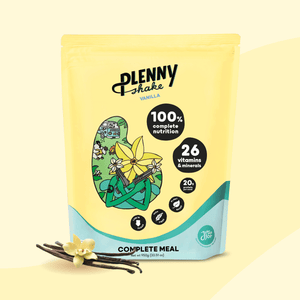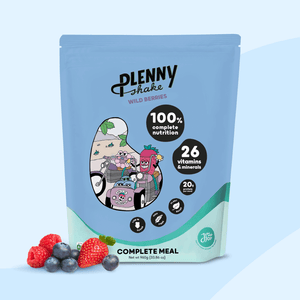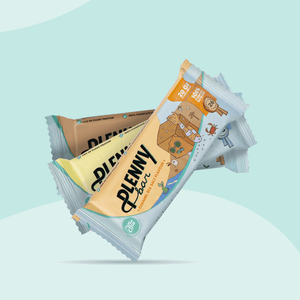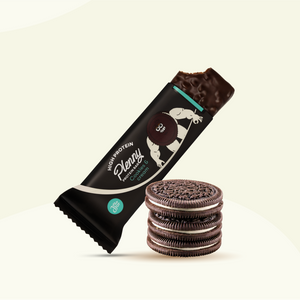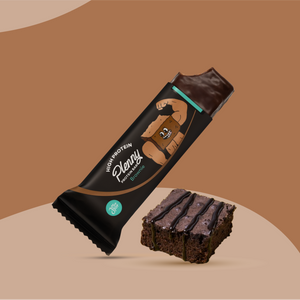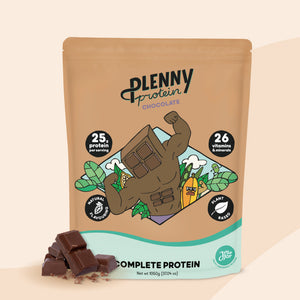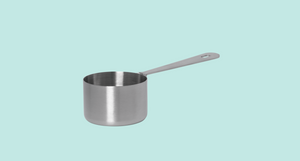
Throughout history, humans have experimented with many different treatments and regimes in the name of beauty. Dating back as early as Ancient Egyptian times, people went to extreme measures to attain beautiful and young-looking skin. Many of these early attempts at skincare were more harmful than good since there was little science behind it. [1] For example, toxic white lead was a popular cosmetic ingredient during the Elizabethan era (late 16th century) and was used as a treatment to whiten the skin. One of the most famous figures to use lead makeup was Queen Elizabeth I, who used it to cover her smallpox scars. [1] Luckily, science has evolved a long way since then. We now have access to an abundance of reliable scientific resources to help us understand how to achieve a more youthful appearance.
What Causes Our Skin To Age?
At about 20 square feet, our skin is the largest organ in the body. It also functions as a protective barrier between the human body and the external environment. [2] Our skin is the most vulnerable organ in the body since it’s constantly exposed to environmental stressors, which cause oxidative stress.
Oxidative stress
What is oxidative stress, you ask? Oxidative stress is commonly caused by exposure to oxygen and other environmental stressors, such as UV radiation, pollutants, and heavy metals. [3] Years of oxidative stress can take a toll on our skin and can cause it to become thinner, more easily damaged, and lose volume and elasticity. Ultimately, this leads to sagging and wrinkling skin. [4]

Inflammation
Besides oxidative stress (mentioned above), two additional significant causes of skin ageing include ischemia - or lack of blood flow, and inflammation. [3] Inflammation is a normal physiological process in the body that causes injured tissue to heal. Normally, the inflammatory process ends once the wound or injury is healed. However, it is possible to develop chronic inflammation, in which case the inflammatory process could begin even if there is no injury, and it doesn’t end when it should. Chronic inflammation can be caused by infections that don’t go away, abnormal immune reactions to normal tissues, or conditions such as obesity. Over time, chronic inflammation can cause DNA damage and lead to cancer. [5] Simply put, chronic inflammation can contribute to damaging and ageing your skin by causing it to become thinner, produce irregular pigmentation (spots and scarring), and even increase your risk of skin cancer! [6] Yikes.
Can your diet help?
If we want to limit the ageing of our skin, we would need to tackle these problems or prevent them from ever becoming an issue in the first place. But is it possible to do so through our diet? Let’s take a closer look at which dietary habits could improve the overall quality of our skin as well as limit skin damage, which is the key to maintaining young and healthy skin!
Get Your Daily Dose Of Antioxidants
To treat oxidative stress, we would need antioxidants to counterbalance the damaging effects. Antioxidants are man-made or natural substances that may prevent or delay some types of cell damage. Research has shown that antioxidant molecules counteract oxidative stress [7].

It is widely accepted that a plant-based diet with a high intake of fruits, vegetables, and other nutrient-rich plant foods can reduce the risk of oxidative stress- and related diseases. [8-13] This is because plant-based foods introduce significantly more antioxidants into the human diet than animal-based foods. [14] If you didn’t already know, it just so happens that our Plenny meals are completely plant-based, so no animal products here!
UV Radiation
To get even more specific, scientific evidence shows that antioxidants are effective at preventing skin ageing, particularly ageing caused by UV radiation - a.k.a. sunshine. [15] It’s safe to say that most of us don’t want to shy away from the sun, especially when spring and summer are finally on the horizon! In that case, you might want to consider being more mindful of your antioxidant intake. It’s been shown that especially a combination of vitamin A and C works well in protecting the skin against UV damage. [16] Incorporating Jimmy Joy meals into your diet is a great idea, since most meals contain a wide range of up to 26 micronutrients. Vitamins A, C, E, copper, zinc, and selenium, for example, are some of the antioxidant micronutrients found in our meals.

Eat More Plants
Research has shown time and time again that a plant-based diet has anti-inflammatory effects which lower the risk for inflammatory diseases, such as cardiovascular diseases and cancer. [17] Pretty solid motivation to eat more greens, right? However, let’s look at a more superficial incentive to add more plant foods to your diet: multiple studies have shown that a higher intake of fruit and vegetables may improve your skin’s texture and/ or appearance. To be more specific: one study reveals that a high intake of vegetables, legumes, and olive oil appeared to be protective against cutaneous actinic skin damage (wrinkles) caused by UV radiation. In other words, eating your veggies makes you less prone to developing wrinkles! [18]

Endotoxins
On the other hand, a high intake of meat, dairy, and butter appeared to have adverse effects on skin wrinkles. [18] This doesn’t come as a surprise, since animal fats and proteins actually trigger inflammatory reactions in the body. The reason why is because animal products contain certain bacterial toxins, known as endotoxins, which can cause inflammation when they reach our bloodstream. [19] You can enjoy our Plenny meals without having to worry about any nasty toxins entering your body since our meals are totally plant-based.

Carotenoids
Another fun fact: eating fruits and vegetables can help improve the colour of our skin. This is due to carotenoids, a class of more than 600 pigments that give fruits and vegetables their yellow-red colouration. Carrots, tomatoes, kale, and oranges are a few examples of foods that are rich in Carotenoids. When consumed, these pigments also color human skin and can help achieve a more rosy and golden glow! [20] It’s actually been shown that this ‘skin carotenoid colouration’ is considered a valid indicator for perceived health and a healthy diet. [21] Besides improving your skin colour, Carotenoids also help protect your skin from UV radiation [16]. How do you like them apples?
Ditch the Dairy
Acne vulgaris, the most common skin disease of western civilization, has evolved into an epidemic affecting more than 85% of adolescents. [22] Acne isn’t only common among teenagers, it affects many adults too. While Acne isn’t something to be ashamed of- or embarrassed by, it is something that many teens and adults feel self-conscious about.
Cow's Milk
We hate to break it to you cheese-lovers out there, but you might want to consider ditching dairy if you suffer from acne. Scientific evidence shows that milk and other dairy products have serious acne-promoting effects. [23] This is largely due to certain hormones and insulin-like growth factors found in cow’s milk. After all, cow’s milk is designed to promote the growth of calves. Limiting- or completely removing dairy from your diet may therefore reduce acne. [23] Luckily, our Plenny meals are completely dairy-free, so no increased risk of breakouts here!
Incorporate Unsaturated Fats
Skin sensitivity is a common problem in the Western population and commonly results in dryness, roughness, scaling, and/or redness of the skin. Changes in skin properties such as skin barrier function, hydration, and skin physiology are often the culprit. [24] Many people who suffer from dry, sensitive skin are quick to use topical treatments, such as lotions, serums, and creams, to tackle the issue. You would think that a cheaper and more sustainable treatment would be to treat it from the inside out, through diet. But how?
Polyunsaturated fatty acids
Research shows that skin properties can be regulated by dietary fatty acids, especially polyunsaturated fatty acids. [24] Walnuts, sunflower seeds, and flaxseeds are examples of foods with high amounts of polyunsaturated fats. In case you didn’t know, all of our Jimmy Joy meals contain a good amount of healthy fats. Our Plenny Shake, for example, contains 6.7 grams of polyunsaturated fats!
Flaxseed oil
In 2011, a paper was published entitled “Supplementation of Flaxseed Oil Diminishes Skin Sensitivity and Improves Skin Barrier Function and Condition.” The findings from this study illustrated that supplementing flaxseed oil decreased skin sensitivity, skin roughness, and scaling, while skin smoothness and hydration were increased. In short, the data provided evidence that daily intake of flaxseed oil improves skin condition. [24] In case you didn’t know, our Plenny Shake and Plenny bar contain a good amount of ground golden flaxseeds!

Keep Your Gut Happy
You might know by now that our gut (microbiome) is rich in many different types of microorganisms, otherwise known as gut microbiota. When there is a high diversity of microbiota present in the gut, the microbiome is considered to be healthy. It’s been shown that a healthy gut plays an important role in our overall health. [25] On the other hand, an imbalance in the gut microbiome has been linked to chronic inflammation and various diseases, such as obesity, type 2 diabetes, atopy, and inflammatory bowel disease. [26] Remember how we mentioned earlier that chronic inflammation can affect our skin health?
Skin diseases
While the direct connection between gut- and skin health is an area of research that’s still fairly new, there are some relevant and interesting findings. For example, there is emerging evidence connecting unhealthy gut environments to skin diseases, such as psoriasis, rosacea, eczema, and acne. [27-28] However, it’s still quite difficult for scientists to define the exact correlation between our gut and skin health. It’s more likely a rather complex relationship between our nervous, immune, and endocrine systems as well as environmental factors such as diet and medications. [29]
Pre- and probiotics
Nonetheless, clinical evidence does suggest that keeping our gut happy also helps keep our skin healthy. How do you ensure a healthy gut microbiome, you ask? Well, for starters by including both prebiotic- and probiotic foods into your diet. Prebiotics are, essentially, fibre-rich foods that feed the ‘good bacteria’ in our tummies. Probiotics are the live microbes themselves and can be found in supplements or fermented foods. Combining both pre-and probiotic foods has been reported to be the most beneficial for our gut health. [30]

If you’re looking for an easy way to incorporate these gut-happy components into your diet, consider trying out our Plenny meals! We’ve added fibre-rich prebiotics, such as inulin, oats, soy, and flaxseed into our meals to help feed those healthy gut bacteria. Of course, we didn’t forget to include probiotics as well. You can find our little probiotic friends, called “Bacillus coagulans”, in our Plenny Shake, Plenny Shake Active, and Plenny Pot!
Stay Hydrated
H2O… it’s the name of the game. It might not be the first time you’ve heard that the human body is made up of roughly 60% water. Water is essential for regulating many important physiological processes and functions in the body. On average, it’s recommended that adult women consume at least 2.7 litres of water a day, while men should consume at least 3.7 litres. This doesn’t mean you necessarily have to drink 10 glasses of water every day, but also includes the fluids you consume through foods and caffeinated beverages, for example. [31]
Fun fact: research shows that if you’re someone who drinks regular amounts of water or less, increasing your water intake can have a positive impact on the hydration and overall health of your skin. [32] When you’re dehydrated, your skin also becomes more vulnerable to skin disorders and premature wrinkling. [33] So drink up, baby! You could make it easier to increase your water intake by ‘eating it’ through a meal. Our Plenny Drink, for example, contains 330 ml of fluids. You could add even more fluids to a Plenny Shake.
Conclusion
Our dietary choices can affect the health and appearance of our skin. If you’re interested in maintaining healthy, youthful skin, it’s necessary to consider the main causes of skin ageing, such as oxidative stress, lack of blood flow, and inflammation. It’s been proven that consuming plant-based foods rich in antioxidants and polyunsaturated fats is effective in limiting (skin) ageing, preventing disease as well as promoting a healthy gut microbiome. It’s also recommended to avoid animal-based fats and proteins, specifically dairy since these foods have been shown to negatively affect our skin health. And last but not least: increasing your water intake also helps maintain hydrated and glowy skin.
Sources
- Little, B. (2016). Arsenic Pills and Lead Foundation: The History of Toxic Makeup. National Geographic. https://www.nationalgeographic.com/science/article/ingredients-lipstick-makeup-cosmetics-science-history
- Cao, C., Xiao, Z., Wu, Y., & Ge, C. (2020). Diet and Skin Aging-From the Perspective of Food Nutrition. Nutrients, 12(3), 870. https://doi.org/10.3390/nu12030870
- Pizzino, G., Irrera, N., Cucinotta, M., Pallio, G., Mannino, F., Arcoraci, V., Squadrito, F., Altavilla, D., & Bitto, A. (2017). Oxidative Stress: Harms and Benefits for Human Health. Oxidative medicine and cellular longevity, 2017, 8416763. https://doi.org/10.1155/2017/8416763
- Greger M. (2013). The Anti-Wrinkle Diet. NutritionFacts.org https://nutritionfacts.org/2013/04/18/the-anti-wrinkle-diet/
- National Cancer Institute. (2015). Risk Factors: Chronic Inflammation. From: https://www.cancer.gov/about-cancer/causes-prevention/risk/chronic-inflammation
- Fuller, B. (2019). Role of PGE-2 and Other Inflammatory Mediators in Skin Aging and Their Inhibition by Topical Natural Anti-Inflammatories. Cosmetics, 6(1), 6. MDPI AG. Retrieved from http://dx.doi.org/10.3390/cosmetics6010006
- National Center For Complementary and Integrative Health. (2013). Antioxidants: In Depth. https://www.nccih.nih.gov/health/antioxidants-in-depth
- Johnson IT. New approaches to the role of diet in the prevention of cancers of the alimentary tract. Mutat Res. 2004;551:9–28. [PubMed] [Google Scholar]
- Joshipura KJ, Ascherio A, Manson JE, Stampfer MJ, Rimm EB, Speizer FE, Hennekens CH, Spiegelman D, Willett WC. Fruit and vegetable intake in relation to risk of ischemic stroke. JAMA. 1999;282:1233–1239. doi: 10.1001/jama.282.13.1233. [PubMed] [CrossRef] [Google Scholar]
- Joshipura KJ, Hu FB, Manson JE, Stampfer MJ, Rimm EB, Speizer FE, Colditz G, Ascherio A, Rosner B, Spiegelman D, Willett WC. The effect of fruit and vegetable intake on risk for coronary heart disease. Ann Intern Med. 2001;134:1106–1114. [PubMed] [Google Scholar]
- Riboli E, Norat T. Epidemiologic evidence of the protective effect of fruit and vegetables on cancer risk. Am J Clin Nutr. 2003;78:559S–569S. [PubMed] [Google Scholar]
- Stanner SA, Hughes J, Kelly CN, Buttriss J. A review of the epidemiological evidence for the 'antioxidant hypothesis'. Public Health Nutr. 2004;7:407–422. doi: 10.1079/PHN2003543. [PubMed] [CrossRef] [Google Scholar]
- World Cancer Research Fund/American Institute for Cancer Research. Food, Nutrition, Physical Activity and the Prevention of Cancer: a Global Perspective. American Institute of Cancer Research, Washington DC; 2007. [Google Scholar]
- Carlsen, M. H., Halvorsen, B. L., Holte, K., Bøhn, S. K., Dragland, S., Sampson, L., Willey, C., Senoo, H., Umezono, Y., Sanada, C., Barikmo, I., Berhe, N., Willett, W. C., Phillips, K. M., Jacobs, D. R., Jr, & Blomhoff, R. (2010). The total antioxidant content of more than 3100 foods, beverages, spices, herbs and supplements used worldwide. Nutrition journal, 9, 3. https://doi.org/10.1186/1475-2891-9-3
- Masaki, H. (2010). Role of antioxidants in the skin: Anti-aging effects, Journal of Dermatological Science, 58(2), 2010, 85-90, ISSN 0923-1811, https://doi.org/10.1016/j.jdermsci.2010.03.003
- Fernández-García E. (2014). Skin protection against UV light by dietary antioxidants. Food & function, 5(9), 1994–2003. https://doi.org/10.1039/c4fo00280f
- Watzl B. (2008). Anti-inflammatory effects of plant-based foods and of their constituents. International journal for vitamin and nutrition research. Internationale Zeitschrift fur Vitamin- und Ernahrungsforschung. Journal international de vitaminologie et de nutrition, 78(6), 293–298. https://doi.org/10.1024/0300-9831.78.6.293
- Purba MB et.al. Skin wrinkling: can food make a difference? J Am Coll Nutr. 2001 Feb;20(1):71-80. DOI: 10.1080/07315724.2001.10719017. PMID: 11293471 https://pubmed.ncbi.nlm.nih.gov/11293471/
- Erridge C, Attina T, Spickett CM, Webb DJ. (2007) A high-fat meal induces low-grade endotoxemia: evidence of a novel mechanism of postprandial inflammation. Am J Clin Nutr. 86(5):1286-92.
- Whitehead, R. D., Coetzee, V., Ozakinci, G., & Perrett, D. I. (2012). Cross-cultural effects of fruit and vegetable consumption on skin color. American journal of public health, 102(2), 212–213. https://doi.org/10.2105/AJPH.2011.300495
- Stephen, I.D., Coetzee, V., Perrett, D.I. (2011). Carotenoid and melanin pigment coloration affect perceived human health. Evolution and Human Behavior, 32(3), 216-227. https://doi.org/10.1016/j.evolhumbehav.2010.09.003
- Danby F. W. (2008). Diet and acne. Clinics in dermatology, 26(1), 93–96. https://doi.org/10.1016/j.clindermatol.2007.09.018
- Melnik B. C. (2011). Evidence for acne-promoting effects of milk and other insulinotropic dairy products. Nestle Nutrition workshop series. Paediatric programme, 67, 131–145. https://doi.org/10.1159/000325580
- Neukam, K., De Spirt, S., Stahl, W., Bejot, M., Maurette, J. M., Tronnier, H., & Heinrich, U. (2011). Supplementation of flaxseed oil diminishes skin sensitivity and improves skin barrier function and condition. Skin pharmacology and physiology, 24(2), 67–74. https://doi.org/10.1159/000321442
- Valdes A M, Walter J, Segal E, Spector T D. (2018). Role of the gut microbiota in nutrition and health BMJ, 361 https://doi.org/10.1136/bmj.k2179
- Bull, M. J., & Plummer, N. T. (2014). Part 1: The Human Gut Microbiome in Health and Disease. Integrative medicine (Encinitas, Calif.), 13(6), 17–22.
- Vaughn AR, Notay M, Clark AK, Sivamani RK. (2017). Skin-gut axis: The relationship between intestinal bacteria and skin health. World J Dermatol. 6(4): 52-58 https://www.wjgnet.com/2218-6190/full/v6/i4/52.htm
- Valdes A M, Walter J, Segal E, Spector T D. (2018). Role of the gut microbiota in nutrition and health BMJ. 361 :k2179 https://www.bmj.com/content/361/bmj.k2179
- Mohanty, D., Misra, S., Mohapatra, S., & Sahu, P. Soumyaranjan. (2018). Prebiotics and synbiotics: Recent concepts in nutrition. Food bioscience, 26, 152-160. doi: 10.1016/j.fbio.2018.10.008
- Armstrong, L. E., & Johnson, E. C. (2018). Water Intake, Water Balance, and the Elusive Daily Water Requirement. Nutrients, 10(12), 1928. https://doi.org/10.3390/nu10121928
- Palma, L., Marques, L. T., Bujan, J., & Rodrigues, L. M. (2015). Dietary water affects human skin hydration and biomechanics. Clinical, cosmetic and investigational dermatology, 8, 413–421. https://doi.org/10.2147/CCID.S86822
- McIntosh, J. (2018). Fifteen Benefits Of Drinking Water. Medical News Today. https://www.medicalnewstoday.com/articles/29

 Everything You Need In One Meal
Everything You Need In One Meal
 Stay Full For 3-5 Hours
Stay Full For 3-5 Hours




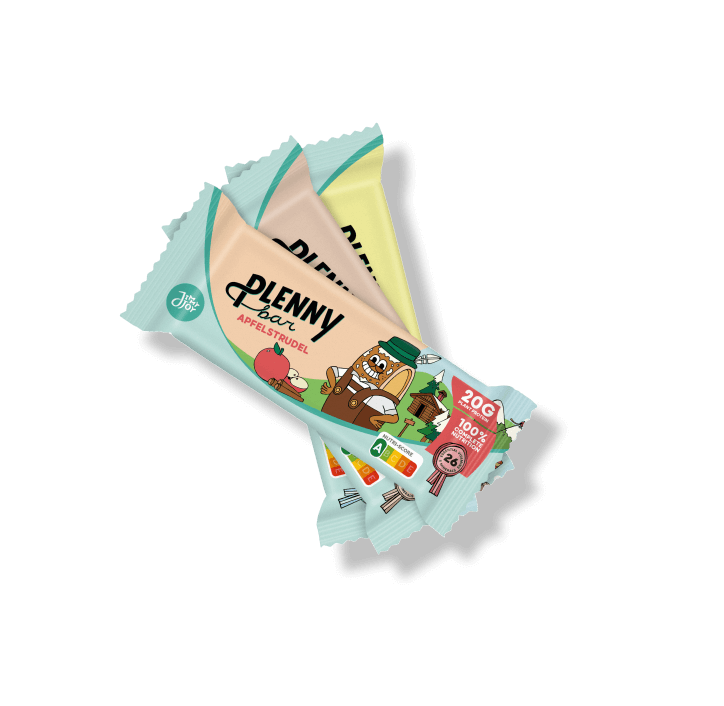


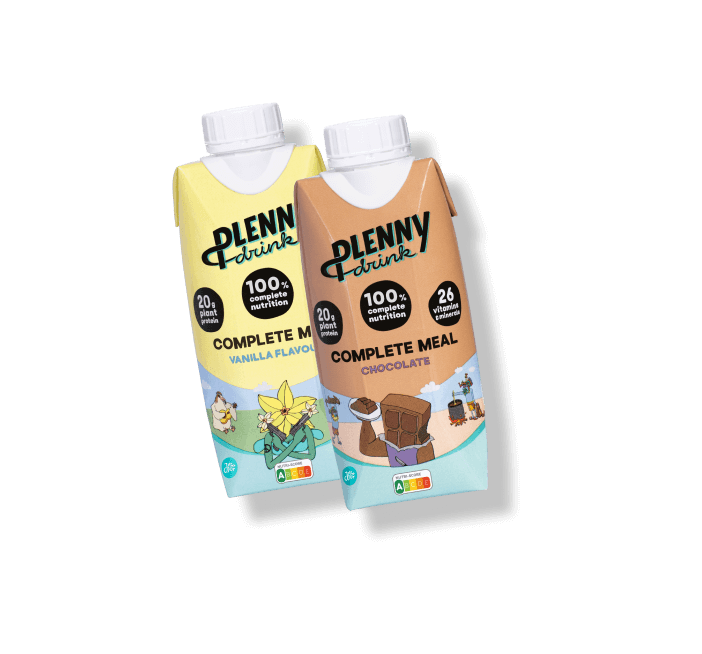


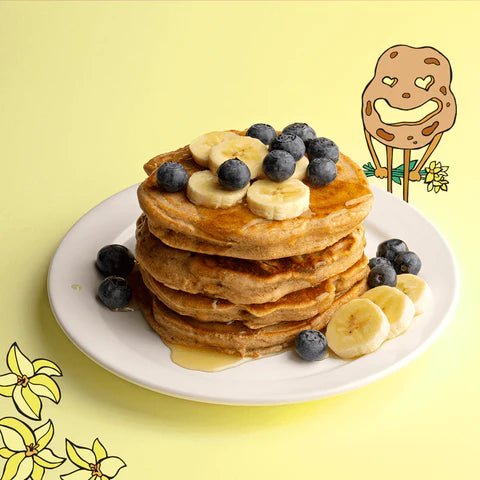


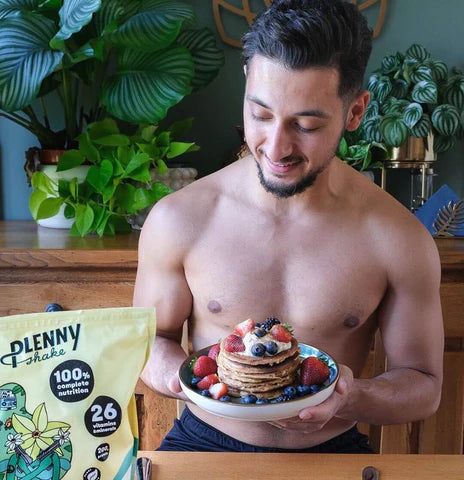


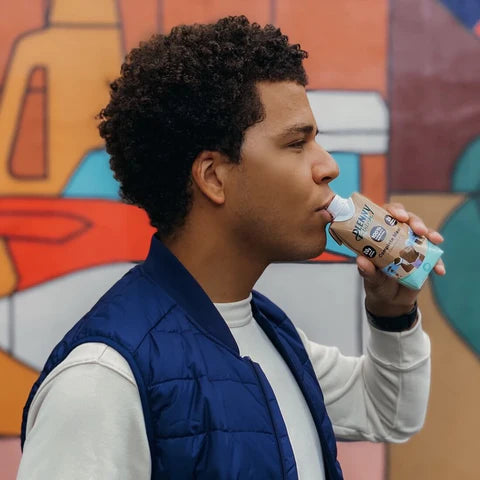

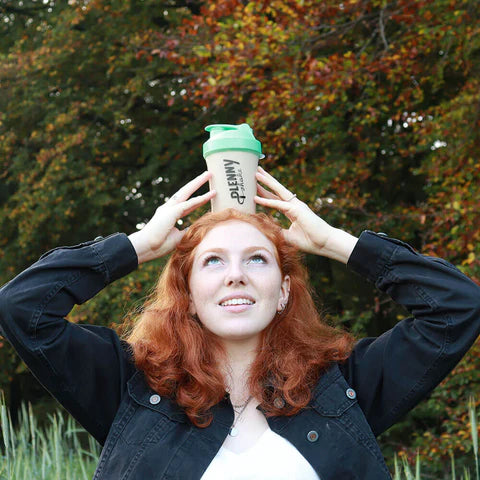

 Product added to cart
Product added to cart



